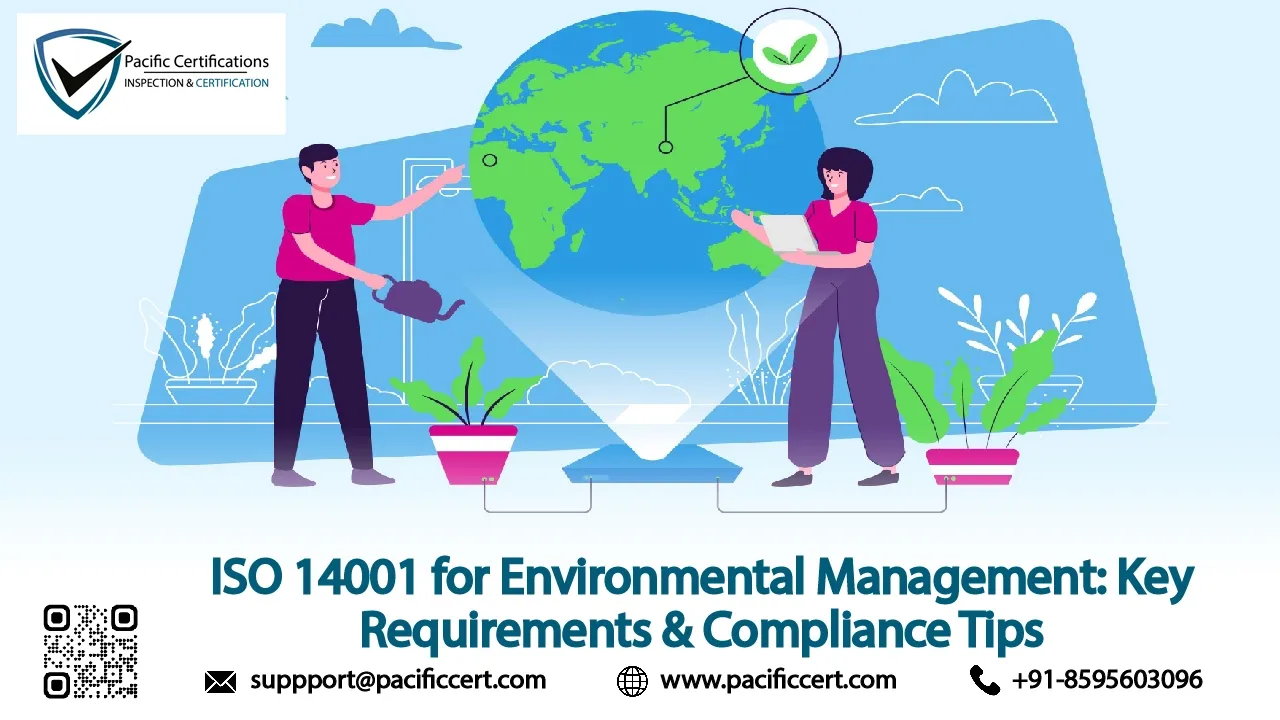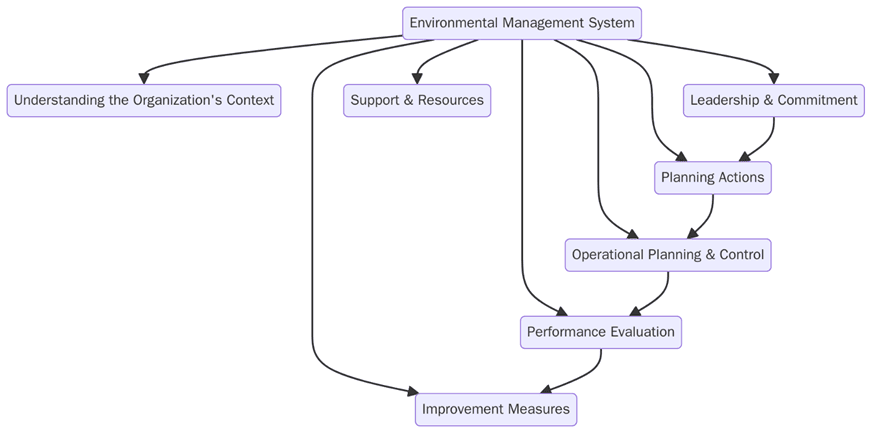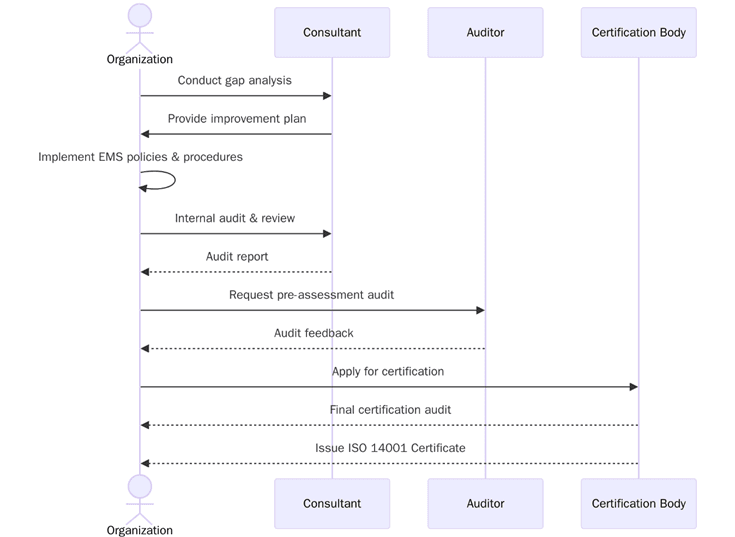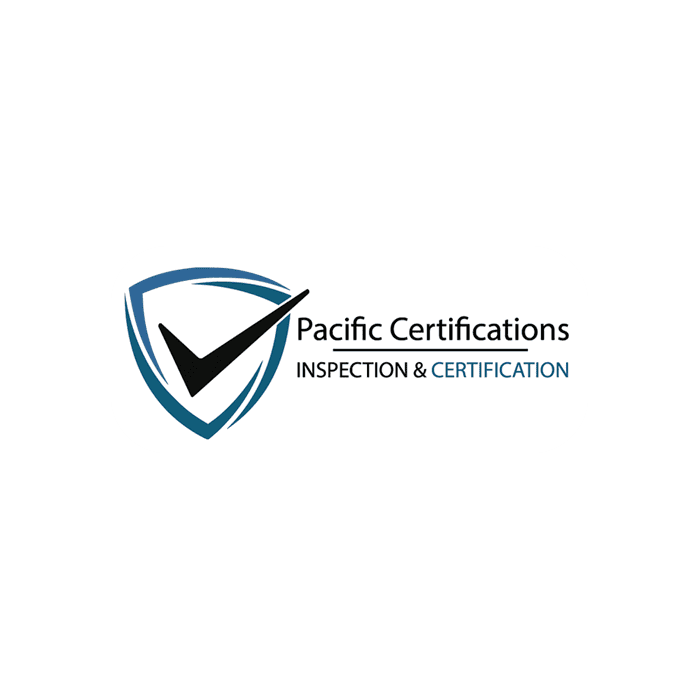ISO 14001 for Environmental Management: Key Requirements & Compliance Tips

Environmental responsibility no longer is just a matter of seeking compliance, but impacts business advantage. Governments and businesses around the world are turning towards a more structured form of environmental management as a means of addressing their environmental footprint, managing environmental risk and communicating their commitment to sustainability. The ISO 14001 standard provides an internationally accepted framework for organizations to create, implement, and maintain an effective environmental management system (EMS).
Organizations that achieve ISO 14001 certification show to stakeholders, customers, and regulators that organisations are managing their environmental responsibilities. The EMS incorporates environmental issues into the routine decision-making abilities of the organization, establishes compliance with legal obligations, and encourages continual improvement of environmental performance.
For more information, contact [email protected].
What is ISO 14001?
ISO 14001 is a standard in the ISO 14000 standard family related to environmental management systems. This standard provides a systematic approach to identifying, assessing and controlling a variety of environmental aspects to achieve an organization defined environmental objectives. ISO 14001 provides a systematic and procedural framework with a clear life-cycle approach to achieving environmental objectives compared to ad-hoc sustainability activities, while still aligning with an organisation’s objectives.
Implementing ISO 14001 enables organizations to identify the potential for significant environmental impacts that are associated with the organisation’s operations, products and services. By actively monitoring and controlling environmental impacts, an organization can improve resource efficiencies, recycle and reuse to reduce waste and reduce the potential for pollution.
Why ISO 14001 certification matters?
Having ISO 14001 certification means that the organization has established an environmental management system (EMS), and the organization has reduced environmental risks and is more compliant with laws and regulations. It provides stakeholders with a level of independence assurance that the organization is doing its best to operate sustainably and responsibly in regard to the environment.
In addition, it can help improve operational efficiency through the proliferation of better resource use, effective energy usage, and waste management. When an organization has ISO 14001 certification, it is often competitive when requesting contracts, as many clients prefer suppliers with recognized environmental management credentials.
Review the requirements of ISO 14001
Organizations seeking ISO 14001 certification must address several key requirements:

- Identify internal and external factors that affect environmental performance and determine the scope of the EMS.
- Top management must show commitment by establishing environmental policies and allocating necessary resources.
- Conduct environmental risk assessments, identify significant environmental aspects, set objectives, and determine measures to mitigate risks.
- Ensure resources, training, awareness, and communication processes support the effective functioning of the EMS.
- Implement operational controls to manage environmental aspects, including waste management, energy use, emissions, and material handling.
- Monitor and measure environmental performance, evaluate compliance obligations, and conduct internal audits.
- Address nonconformities, implement corrective actions, and pursue continual improvement in environmental performance.
For more information, contact [email protected].
How to prepare for ISO 14001 Certification?
Proper preparation ensures smoother certification and higher likelihood of success. Key steps include:

1. Performing a gap analysis on current environmental practices against ISO 14001 requirements.
2. Developing a formal "Environmental Policy" to show the organization's sustainability commitment and compliance with regulations.
3. Training employees on their environmental obligations related to waste management, energy consumption, and reporting.
4. Documenting processes, records, compliance checks, and corrective actions.
5. Conducting internal audits to identify and treat potential non-conformances ahead of the external audit.
6. Setting measurable environmental objectives and establishing operational controls to manage risks.
7. Involving management to review objectives, environmental performance measures, and corrective actions, ensuring ownership for accountability.
Certification audit
ISO 14001 certification audits are conducted by accredited certification bodies to validate the effectiveness of your EMS. The audit involves the following stages:
• Stage 1: In this first stage of an audit, the auditors thoroughly review your documented EMS, which includes environmental policy, procedures, manuals and records.
• Stage 2: The auditors are evaluating your facility using a detailed process. The audit is meant to find out if the EMS process is documented, but more importantly, being used in daily activities.
• Non-conformities - As part of the audit, the auditors may issue Non-Conformance Reports (NCRs) for items that do not conform to ISO 14001. The audit may reveal compliance gaps that require corrective actions to be planned, and to implement to avoid recurrences, and to ensure compliance.
• Continual improvement - The auditors may evaluate if the organization is tracking environmental performances, assessing targets and objectives, and making genuine strides towards continual improvement.
• Management review - The auditors will review how management is involved in the EMS processes, how resources are allocated for this, how environmental policy is being implemented, and how they oversee environmental objectives.
• Final certification decision - After a successful audit, and closing any NCRs, the certification body will issue ISO 14001 certification.
• Surveillance and recertification audits - Following the initial certification, the auditor will conduct surveillance audits to ongoing, or verify the absence of compliance gaps. The recertification audit, completed every three years, will assess the EMS in an overreaching manner to confirm ISO 14001 certification renewal.
What are the benefits of ISO 14001?
Implementing ISO 14001 delivers multiple benefits for organizations:

• Organized management of environmental issues lowers pollutants and wastage, as well as decreases negative environmental consequences.
• ISO 14001 assists organizations in identifying applicable environmental regulations, and can help organizations maintain compliance over time.
• smooth use of resources, energy and reduction of waste contributes to savings in operating costs over time.
• Certification establishes an organization's responsibility towards the environment, making them more credible with clients, partners, and regulators.
• Identifying and controlling environmental risks, helps to avoid potential incidents and liability periods.
• Efficiency in environmental processes increase with systematic monitoring and controls, which reaffirms consistency of performance.
• Staff are more informed of their environmental responsibilities, and when trained effectively, are able to practice sustainability at work.
Contact Us
Pacific Certifications provides accredited ISO 14001 certification services and can guide organizations in implementing an EMS, preparing for audits, and achieving certification. Our team ensures your environmental management processes meet ISO 14001 standards effectively.
Reach out to us at [email protected] or visit www.pacificcert.com to start your ISO 14001 certification journey.
Ready to get ISO 14001:2015 certified?
Contact Pacific Certifications to begin your certification journey today!
Suggested Certifications –

